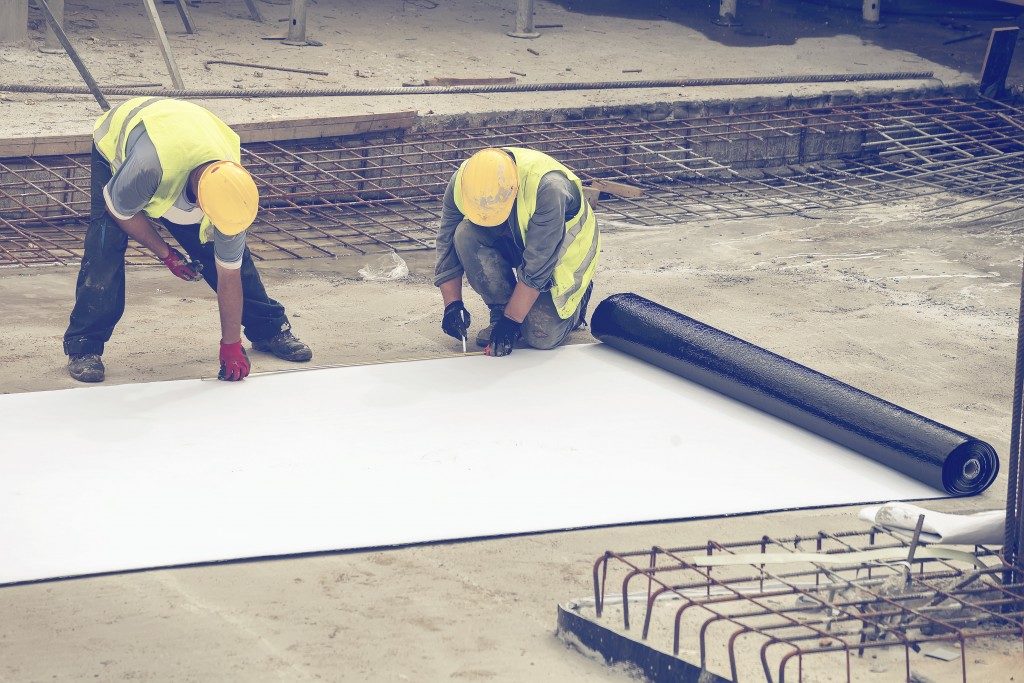Concrete is one of the most common construction materials as it’s affordable and durable. However, they are porous, and water can penetrate concrete causing damage and deterioration, which is why waterproofing of concrete buildings and structures is essential to avoid water from seeping inside buildings and/or preventing water from leaking out of where they’re supposed to be contained such as swimming pools and concrete water tanks.
As such, there have been many types of waterproofing systems and coatings that have become available for different construction projects. Today, we’ll be taking a look at Cementitious Waterproofing systems, which is one of the most widely-used methods in structural waterproofing:
What Is Cementitious Waterproofing
Cementitious waterproofing systems, as the name suggests, use cement-based coatings to prevent water, water vapor, and moisture from penetrating concrete surfaces. The base of cementitious waterproofing systems is Portland cement and a waterproofing agent.
Where They’re Used
Cementitious waterproofing systems are used for basements and walls of buildings and homes, swimming pools and water tanks, balconies and verandas, tunnels and underground vaults, water treatment facilities, elevator pits, bridges and dams, subway and railway system, cargo ports and docks, parking structures and lots, and are even used as bonding agents between old and new concrete layers. Any structure with a concrete base uses cementitious waterproofing.
Advantages of Cementitious Waterproofing
- Easy to apply. Using and applying cementitious waterproofing is fairly straightforward and can are available at any hardware store or masonry supply shops. They can be handled similarly to cement in which you’d only need to mix it in with water until it achieves the right consistency and can be applied using a stiff-bristled brush.
- Seamless. Due to its cement-like nature, cementitious waterproofing looks monolithic and seamless, which could add to the aesthetic quality of the structure it’s applied to.
- Resistant. Not only is cementitious waterproofing waterproof, but it’s also chemical resistant as well as abrasion and weather resistant including frost.
- Bonding Agent. Cementitious waterproof coatings are good at bonding porous and non-porous surfaces, as well as old and new concrete.
Types of Cementitious Waterproofing

Crystalline. Crystalline Cementitious Waterproofing systems are composed of cement, quarts or silica which are specially treated (thus “crystalline”) and chemicals. Once combined with water, it creates a crystalline structure that fills the pores, cracks, and capillaries in concrete which disallows water from seeping through them. These can be used on the positive and negative sides of concrete structures.
Flexible. Flexible or polymer-modified cementitious waterproofing systems are two-part cement based polymer coatings that are highly flexible (thus the name) and elastic. This type has increased adhesion but is also breathable, which means that any water vapor from the concrete won’t get trapped and cause any blistering. This type of coating is mostly used for water storage tanks, basements, swimming pools, and pumping stations, and any other structures that are constantly in contact with water.
Conclusion
Waterproofing is an important aspect of construction, and cementitious waterproofing is widely used since it’s one of the easiest, cheapest, and effective methods. So the next time you’re planning on having a swimming pool on your home or adding a concrete water tank to supplement your water supply, it’s a good idea to consider using cementitious waterproofing for your construction project.




